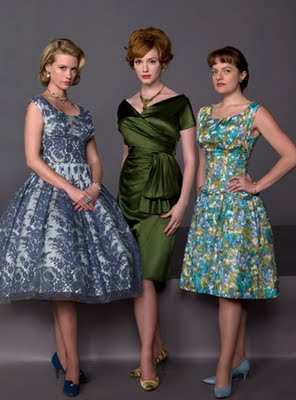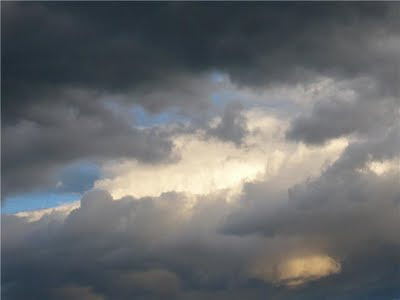
by Larry Buttrose
Watching television, as we all are only too well aware, is a waste of time. Beyond news, current affairs and some documentaries, it is junk media content. If it’s not game shows it’s talent quests and “reality” shows about Americans marooned on a desert island without as much as a banana daiquiri. Then there are are the crimes against humanity, such as Big Brother and the leadfoot trogs of Top Gear.
This sort of guff is offensive enough, but television drama is a scarred moonscape, unless that is you find crime and cold-blooded murder entertaining, or are enthralled by the near-mystical insights of the teenagers from forensics. So it is approaching a miracle when a drama series worth watching happens along, as it did with Mad Men, the first series of which recently finished screening on SBS.
Why, some might ask, watch a show about the Madison Avenue ad-men of the 1960s? What is special about it, beyond the much remarked upon period art direction, and the trademark cool of the acting? What does it have beyond that?
The answer is good writing. In this show it is as if all these decades of creative writing courses at universities across the US have paid off all at once, and a generation of writers hitherto condemned to knocking together sitcoms or movies starring Drew Barrymore suddenly have a receptacle in which to pour all the precious insights they have learned from the likes of Robert McKee.
But beyond that, it has the most important ingredient of all, which is a little bit of magic. Any co-operative dramatic project - be it stage, film or TV - might perhaps possess all the necessary elements of script, cast, direction, design - and still fail, all too readily. To succeed it must work a little magic. It must constantly fascinate, beguile, intrigue, charm, surprise and challenge the audience, and more. Mad Men certainly does all that: it has its magic, in spades.
Like any good drama, more than anything else, it genuinely surprises. For instance, the Mad Men are horrible, male sociopaths who will do whatever it takes to get to the top. Virtually to a man they are chauvinist to a degree that never fails to surprise the contemporary viewer in its many manifestations, especially as these men belong to the educated professional elite of one of the leading cities on earth.
They are patronising, controlling and abusive to women. None of them seems to have any idea of how to love a woman, only possibly how to screw one. At least three of the agency’s married executives are conducting affairs, yet this is Eisenhower’s America, even more stridently “family values” than the Australia of John Howard, and about as authentic.
One also senses a chasm of emptiness inside these men, as though they have no idea whatever what they are looking for, beyond climbing over the next man to seek it. These Mad Men are indeed The Hollow Men.
The central character, Don Draper (Jon Hamm), has already taken most of his steps up the ladder, but retains a cold ruthlessness that extends from his business dealings into his home and marriage. Don is a hard case. He sees every business encounter as a war between men, and every pretty woman as a bedmate in waiting. There is actually little to redeem him as a character, and his back-story of a troubled childhood looks like a network instigated attempt to make him more conventionally sympathetic. But it is his emotional brutality and the degree to which he is lost as a man and a human being that make him compellingly all too real.
As Harvard academic and critic James Wood noted in a New Yorker last year (15 Dec 2008) in an article on Richard Yates’s Revolutionary Road, in which he also reflects upon Mad Men: ‘...mid-century American suburban man is so maddening because he is both a rank escapist and a conservative pragmatist: he has arrogated to himself twin rights that ought to be incompatible’.
Wood’s view would almost constitute a character assessment of Don Draper. As Yates himself is quoted by Wood: “... during the Fifties there was a general lust for conformity over this country, by no means only in the suburbs - a kind of blind, desperate clinging to safety and security at any price, as exemplified politically in the Eisenhower administration and the McCarthy witch-hunts”.
The female characters are variously intelligent and clever, scheming and sly. But in the manner of Fifties conformity, they are almost unfailingly deferential to men, as if the only American women able to speak their minds before the 1960s were Eleanor Roosevelt and Dorothy Parker.
Don’s wife Betty (January Jones) is a bird in a gilded cage, struggling to personify a picture-perfect suburban Jackie Kennedy at home with the kids out on Long Island, while Don stays in town in Manhattan week nights to see clients - but usually his downtown bohemian artist girlfriend.
Betty is aptly named. She could have been a subject for Betty Friedan’s landmark feminist text The Feminine Mystique, which saw the burgeoning burbs of the late 1950s and early 1960s as simmering with the bottled up angst and frustration of women denied freedom and opportunity. Friedan believed their sense of being trapped in the marital home was sapping their emotional and psychological wellbeing. Certainly this seems the case with Betty, who shows increasing signs of mental instability as the series proceeds - and as she secretly intuits that Don is having an affair.
Diametrically different is Peggy Olson (Elisabeth Moss), Don’s personal secretary, a girl from hicksville who from the first moment she enters quietly shows that she is not willing to accept “woman’s role”, and when given a break chips away at the stereotype to rise to copywriter. As a whole, the women seem to be trembling on the verge of something immense: the second wave of feminism is rising - the times they are a’changing.
There is also Joan Holloway (Christina Hendricks), the voluptuous office siren, who questions our contemporary notions of beauty and sexiness. She is undeniably sexy, with a come-hither sensuality, but by the standards of our own times she would be considered by many, both men and women, to be plump with a big arse. How much have we gained, the show asks searchingly and often, but also how much have we lost. Joan uses her curves to gain influence and power in the old-fashioned way, through sexual allure to men.
The America of 1960 is on the cusp of generational change. The ageing patrician army commander in the White House is about to be replaced a young, handsome war hero with an intimate connection to showbiz: the Sixties are about to swing. And while the company’s portfolio might encompass accounts from traditional sources such as steel and tobacco, now there are travel destinations, weight-loss gadgets and cosmetics to peddle too. Any lingering postwar shadow is about to be swept into oblivion in a wave of consumerism.
This generational change is exemplified in the rise of Don and the decline of Roger Sterling (John Slattery) the sterling silver haired partner in the Sterling Cooper agency.
Don and Roger’s modus operandi is subtle competition, but in one memorable episode it bursts out into the open when Roger, sensing the threat from the younger Don, attempts a pre-emptive pass at Don’s wife Betty. Betty resists huffily, needless to say, but even her resistance is not enough for Don, who sniffs trouble.
The joust moves to a Manhattan restaurant. Roger orders oysters and martinis: Don, who claims he hasn’t eaten oysters before, orders another dozen, and more martinis. It is only when the competitive boozing and gorging is over that we realise they are not out to dinner, but lunch, and have to dash back to the office - for of all things a make or break meeting with Richard Nixon’s handlers to gain the Republican account for the forthcoming election campaign against Kennedy.
The lift is out of order, and they must climb long and hard up the stairs to get up to the office. Two decades Don’s senior, Roger can’t keep up, and almost passes out. In almost any Australian drama series, a heart attack would be de rigeur at this point. But it doesn’t happen then. Don goes on ahead, and is shaking hands with the Republicans in the foyer when Roger finally arrives. He smiles, but abruptly turns green around the gills, and without as much as a howdyado deposits his two dozen oysters and a pint of martini onto the agency axminster, right in front of the boots of the boys from the Grand Old Party.
It is a definitively brilliant scene, superbly set up and the drama of the pay-off calibrated impeccably. It will go down as a TV classic - as will the first season finale, the double ending when Don comes home to Thanksgiving with Betty and the children, followed by the same sequence with the house empty and them all gone, lost to him.
Another episode likely to be remembered is the one in which Betty and Peggy have sexual experiences, both without men. Betty’s involves a suitably out of balance washing machine, against which she fantasises about a salesman who tried to sell her an air conditioner. Peggy’s is with a pair of electric “slimming underpants” she is meant to try to strategise a campaign for, and which she finds stimulates her in ways she wasn’t expecting. It is emblematic of the storytelling of Mad Men that Betty’s pleasure comes from imagining herself with a man not unlike her husband, a salesman, while Peggy’s comes from trying on something that will further her career in the exclusively male world she has entered: a pair of pants.
At the end of season one we are left asking will she wear them or leave the job she has fought to get, that of copywriter, to mother her new baby? In 1960, the Mad Men still rule the roost and the world - but their cages are about to be rattled. And in the process, they might just become more human. After all, the alternative is MAD: mutually assured destruction.








